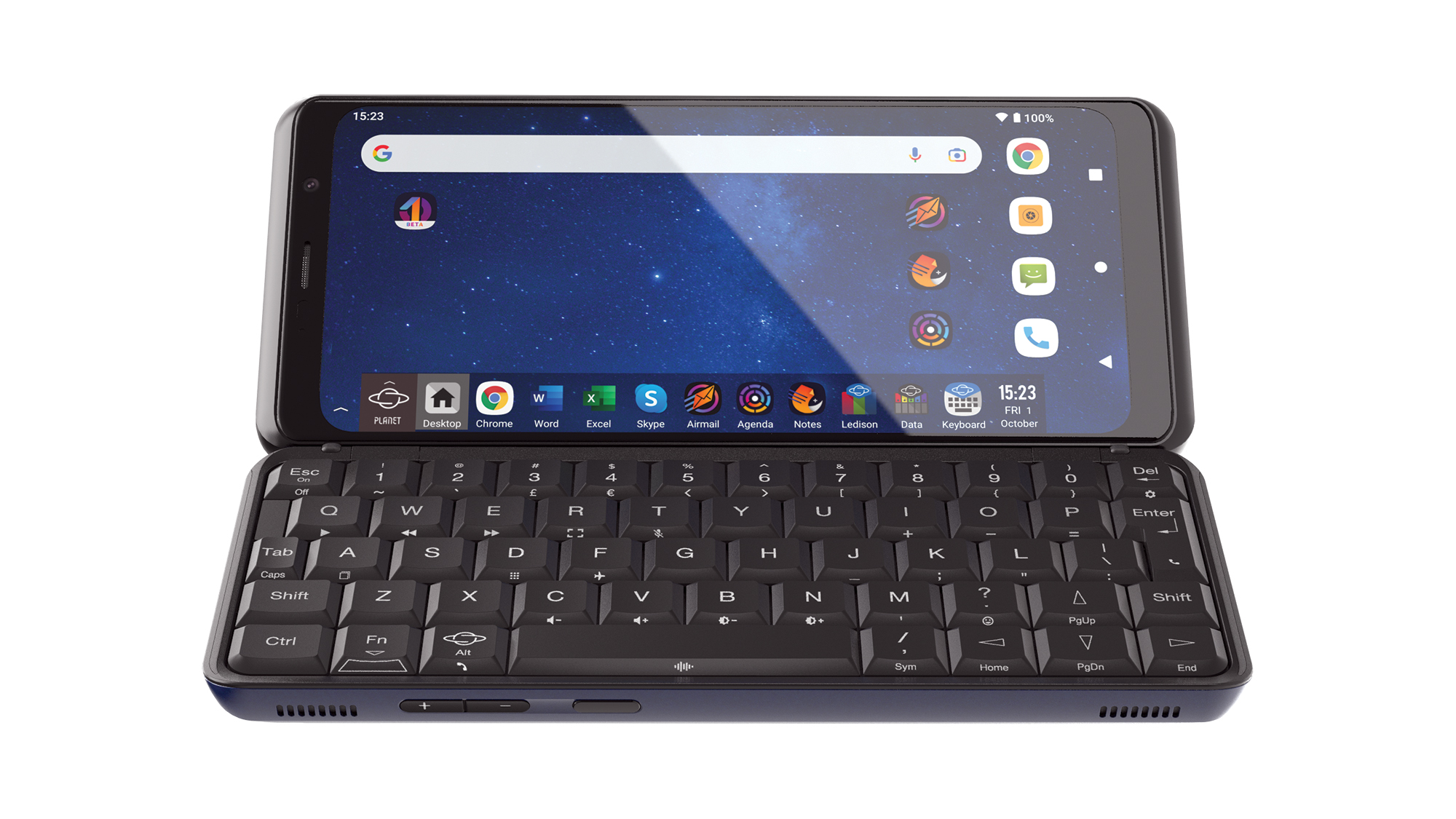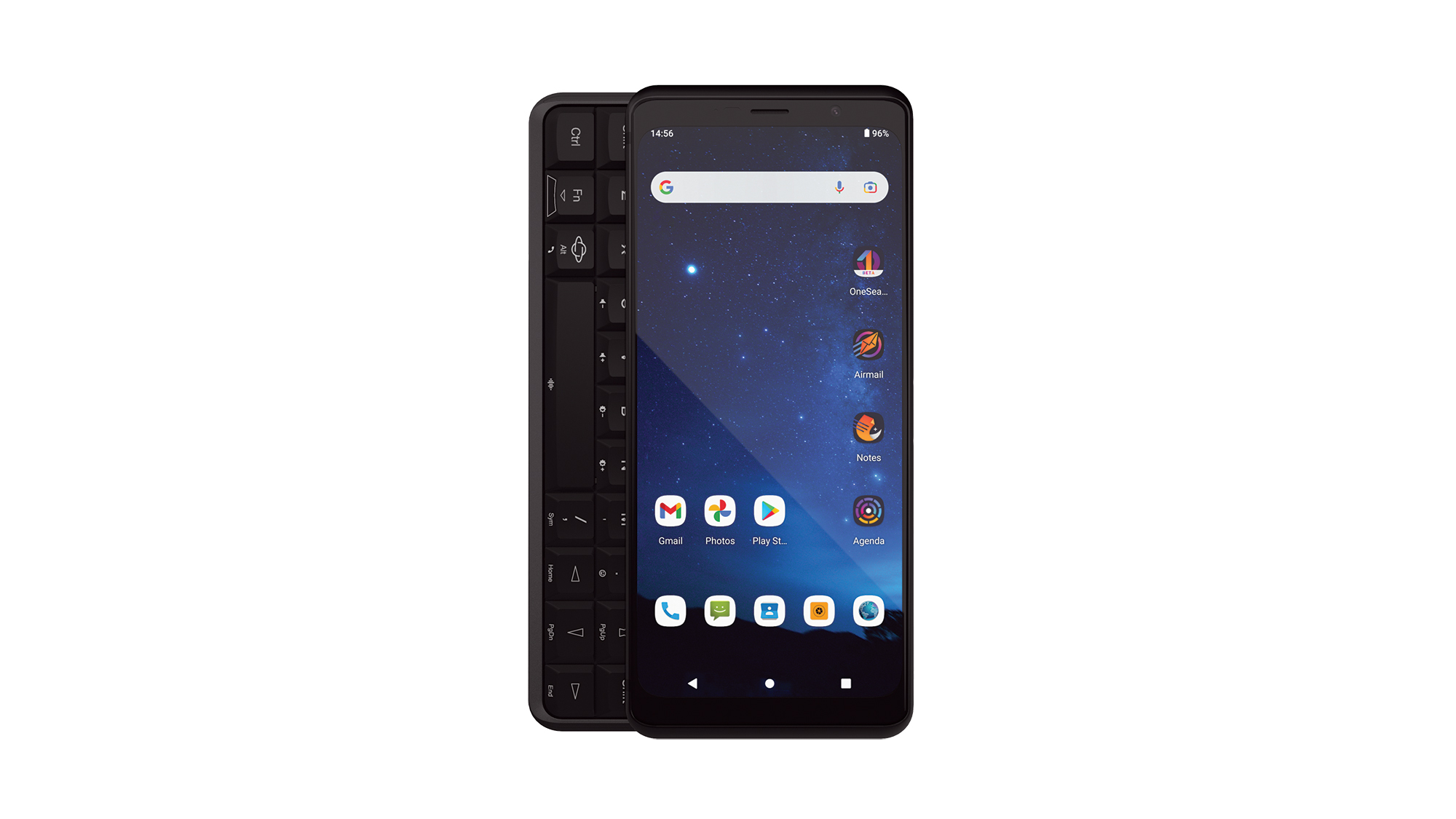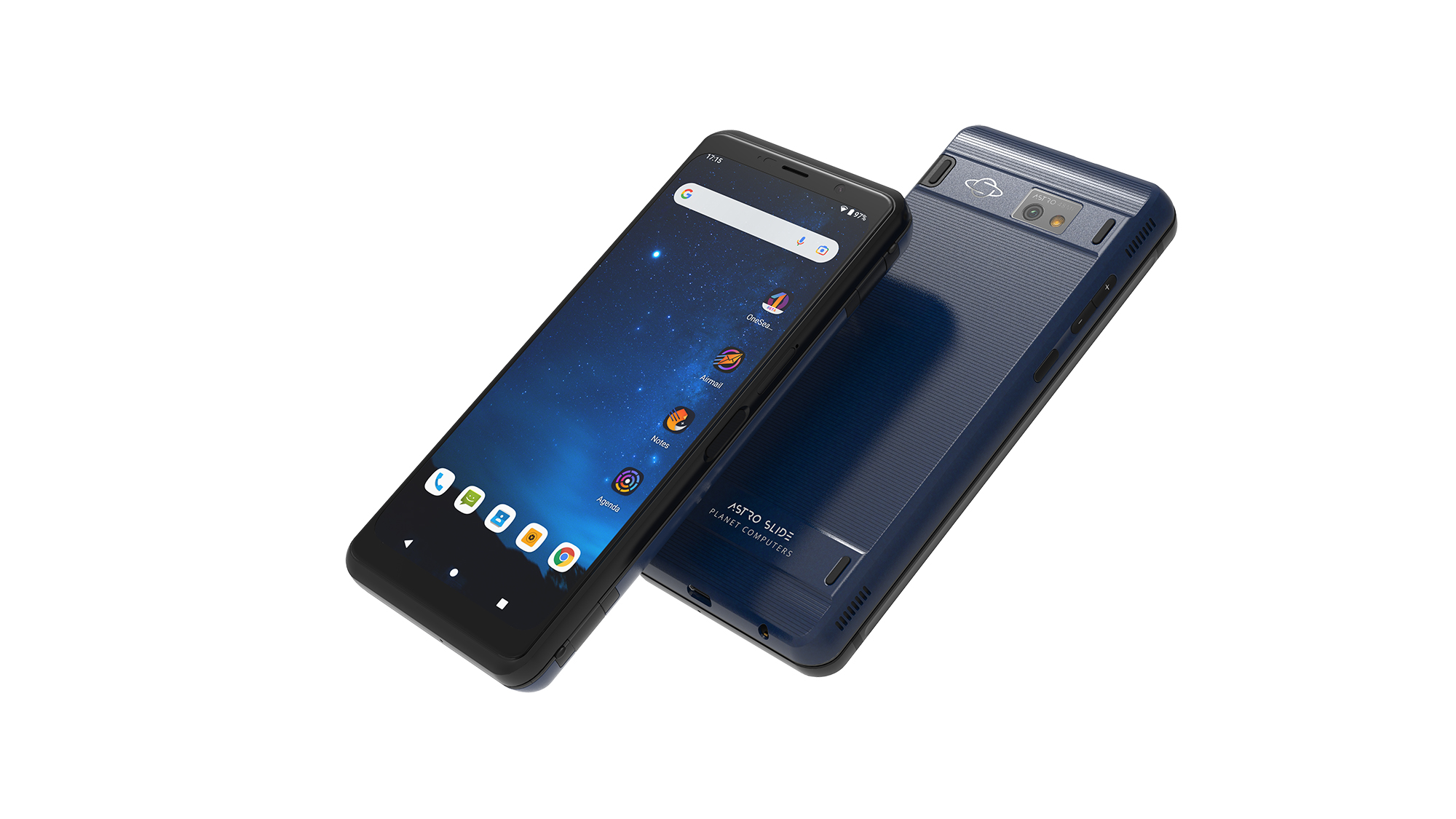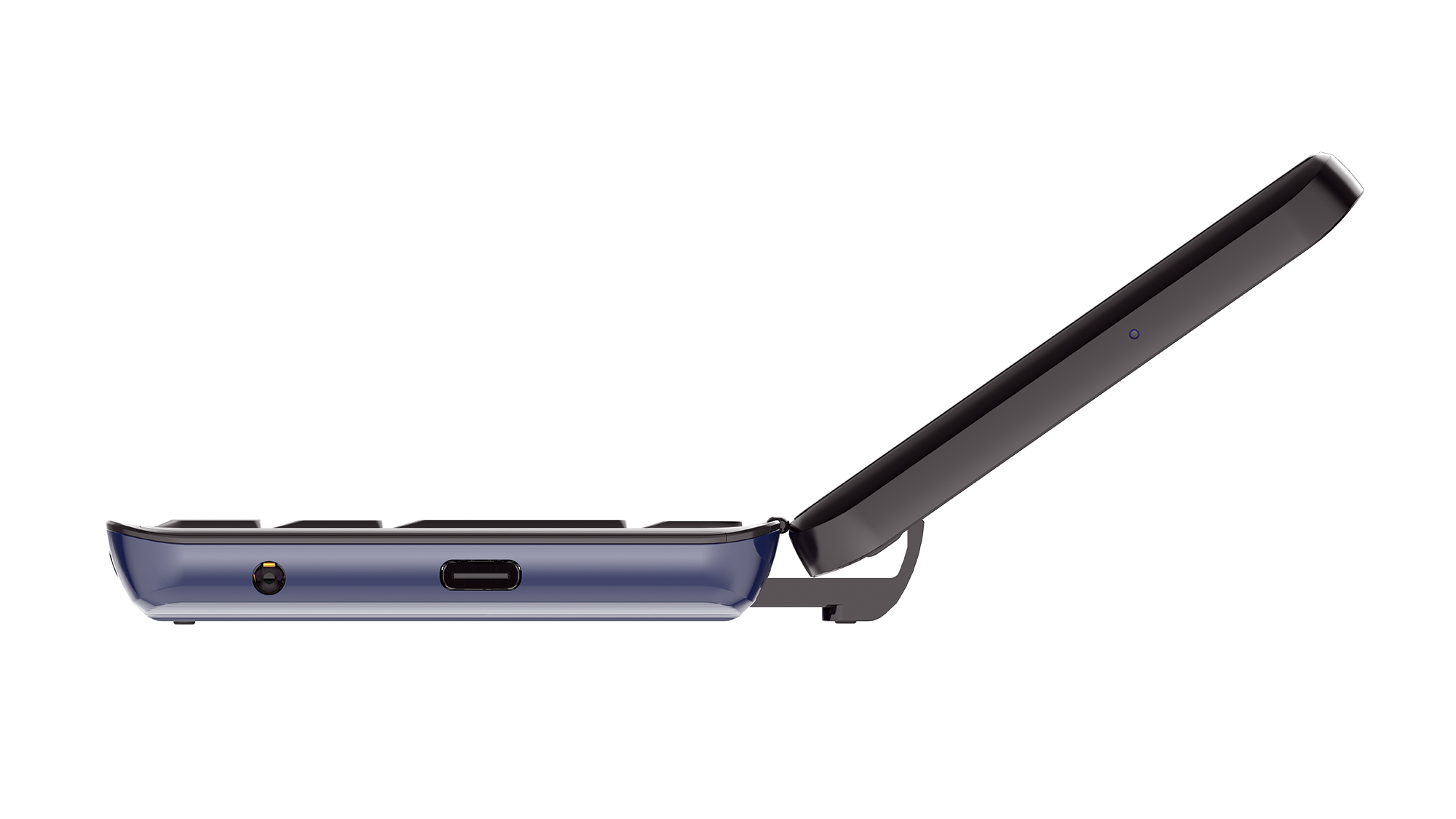Astro Slide 5G review: Yin and yang
The most convincing modern twist on the Psion Series 5, even if its thickness means it will never break out of a niche

-
+
Clever design
-
+
Helpful software
-
+
Excellent keyboard
-
-
Display mirroring requires separate adapter
-
-
Bulky
-
-
Basic features

When London-based Planet Computers launched its Indiegogo campaign for the Astro Slide 5G, way back in March 2020, it came across as ambitious. Both of the company’s previous products, the Gemini PDA and the Cosmo Communicator, were clamshell units that essentially updated the Psion Series 5 for the smartphone era, but the Slide takes a cue from the legendary Nokia E7 by using a sliding mechanism to reveal the mechanical keyboard. A tough trick to pull off.
Astro Slide 5G review: Design
On your first go with the Slide, you may wonder if Planet has met its match: the process can seem wobbly. However, you’ll soon learn to either push upwards with both thumbs on either edge or confidently grab it from the middle. Once in place, the screen doesn’t move a jot as you type. What’s more, thanks to some devious weight management, it will never topple over no matter how hard you prod the screen. It’s a great piece of design.
Another nice feature is the smart button on the left-hand side. Head into the dedicated Astro Settings section of Android’s Settings menu and you can program it in one of three ways: a short press, long press or double-press. For example, we set a short press to start the torch and a long press to launch BBC Sounds.
At this point, however, we must tackle the big problem for the Astro Slide compared to a normal phone: its bulk. It’s twice as thick and heavy as a typical phone, and that makes it far more noticeable in a trouser pocket. You might also feel self-conscious making phone calls with such a lump against your ear. It would be great for a future edition to lose a couple of millimetres from the base and for the lid to become even slimmer.
Astro Slide 5G review: Display
This brings us to the screen, which overall is a plus point: AMOLED technology ensures rich colours, while a 1,080 x 2,340 resolution equates to a 403ppi pixel density across the 6.4in diagonal. It’s protected by Gorilla Glass (third generation), reaches a highly respectable peak brightness of 400cd/m2 and covers 100% of the DCI-P3 colour space. If anything, it’s too keen with its colours, however: they whack you between the eyes with their sheer saturation. Nor is colour accuracy a strength, with an average Delta E of 2.77 well over our ideal of less than 1.

We’re not fond of the panel’s corners having such big curves cut into them either, but the more notable issue is the amount of space above and below the screen: there’s a 12mm bezel at the bottom and 13mm at the top. The only plus point of the latter is that it leaves space for the earphone speaker and the 13MP selfie camera.
Astro Slide 5G review: Keyboard
We are fans of the keyboard itself though, which is the closest yet to the original Series 5 in terms of feel. In fact, it’s arguably an improvement, as it also features a multi-level backlight, while a blue LED lights up if caps lock is applied. As a nice extra touch, the keys are now rounded in the four corners of the device, helping to maximise the use of space.
As with all such keyboards, you can’t expect to reach the same speeds as on a full-size alternative. We tested ourselves over the course of two weeks and the best speed we attained was 37 words per minute. That’s about half our usual pace and roughly the same as we reach on a Swyft keyboard on an Android phone, but the advantage the Astro Slide holds over predictive input is when entering non-standard text, such as code.
The inevitable limiting factor is the width of the device. Our wrists didn’t enjoy the cramped typing position for more than 15 minutes at a push. As someone who writes for a living, though, we can see the Astro Slide coming into its own during edits. It allows you to prod on the screen and jump in at the exact point you want to make amends, and the process is quicker and less fiddly than on a standard phone.
Astro Slide 5G review: Software
With the Astro Slide, you also benefit from Planet Computers’ years of learning through developing two similar products. For instance, it’s well worth teaching yourself the keyboard shortcuts as these will save you time, even when in Android. Fn+D reveals the desktop, for example, while pressing the planet icon brings up a macOS-style dock of your favourite apps.
Then there’s the OneSearch application, which couldn’t be simpler to activate: from the Android home screen, start typing on the keyboard and search results instantly appear. For instance, type “astro” and a selection of links appear that you can tap on, from pre-filled Google searches to shopping results on Amazon. OneSearch also brings up local matches, so typing a name will reveal contacts that you can tap on to bring up their details (or click on the email, message or dial icon next to their name).
Planet Computers also supplies a polished email app, a note-taking app and a calendar that should integrate with any Duo, Google or Exchange accounts you specify. However, we couldn’t persuade the Astro Slide to synchronise with our default Google account or add any others, so either we were unlucky, or some extra dev work needs to happen.

Astro Slide 5G review: Hardware and performance
A lag when shooting video was one of the few times that we wished for a higher-spec chipset, because otherwise the MediaTek Dimensity 800 proved more than a match for Android 11. Videos played smoothly, as did Minecraft. More demanding games will prove an obstacle – it scored 10fps in the demanding 3DMark Time Spy test – but this is a solid mid-range chip.
That’s echoed by its scores in benchmarks, with a single-core result of 504 in Geekbench 5 and 2,202 in the multicore test. Its result of 16hrs 45mins in our video-rundown test is again solid; you’ll need to use this phone intensively to drain the 4,000mAh battery over the course of a day.
It’s also good to see support for wireless charging here, up to a maximum of 10W. Switch to the 30W USB charger if you want quicker top-ups though, even if a figure of zero to 24% in 30 minutes is hardly stellar.
Astro Slide 5G review: Cameras
You should also play down your expectations when it comes to the cameras. The front one isn’t far off what you’d see from a mid-range phone, but firing up the Camera app reveals a lack of finesse and options – think self-timer, image size and that’s it. Its results aren’t awful by any means, but an iPhone this is not.
It’s a similar story for the rear camera, despite the comforting presence of a 48MP Sony sensor. This means you can push all the way up to 8,000 x 6,000 resolutions, but usually the benefit of such a huge sensor is for pixel binning to reduce noise in low light. Nothing so clever is happening here, and the end results were mushy and lacked detail compared to a half-decent modern phone.
You can take videos using both cameras, but there’s no optical image stabilisation and again you aren’t given many options. There are scene modes – sports, snow and night, for instance – but we saw little difference in the end results.
Astro Slide 5G review: Ports and features

You can charge the Astro Slide via either of its USB-C ports, which are placed on opposite sides. Both support OTG and video output, but not directly via USB-C; instead you’ll need to buy a USB-C to HDMI converter, such as the one that Planet sells for £33. Or you can buy its USB-C hub for £37, which adds two USB-A ports and an Ethernet connector. All of which makes sense if you plan to take advantage of this device’s support for booting into Linux-based operating systems, with plans for Debian, Kali and the phone-friendly Sailfish OS.
Further versatility comes through the Astro Slide’s dual SIMs, with space for two nano SIM cards in its extra-long SIM tray along with a microSD card (128GB of storage comes as standard). Or you can use an eSIM. Both SIMs support 5G, with the only blot on this phone’s connectivity being support for Wi-Fi 5 rather than Wi-Fi 6.
Astro Slide 5G review: Verdict
This yin and yang is typical of the Astro Slide 5G. In many ways, it’s a flexible and forward-thinking device, with some ingenious features that could save you time and hassle. In others, it feels basic and hamstrung (think the camera and accompanying app). You must also bear in mind that you’re buying from a small company rather than an international giant, which comes with drawbacks along with its advantages.
Overall, however, the Astro Slide’s positives outweigh the negatives, and let’s never forget that this is a unique device. If you have a compelling reason for a physical keyboard, it’s the best solution we’ve tested by some distance.
Astro Slide 5G specifications
| Processor | 8-core 2.6GHz/2GHz MediaTek Dimensity 800 |
| RAM | 8GB RAM |
| Screen | 6.4in 1,080 x 2,340 60Hz AMOLED screen |
| Front camera | 13MP front camera |
| Rear camera | 48MP rear camera |
| Dust and water resistance | N/A |
| 3.5mm headphone jack | Yes |
| Wireless charging | 10W |
| USB connection type | 2 x USB-C |
| Storage options | 128GB storage |
| Memory card slot (supplied) | MicroSD card slot |
| Wi-Fi | Wi-Fi 5 |
| Bluetooth | Bluetooth 5.1 |
| NFC | Yes |
| Cellular data | 5G |
| Dual SIM | Yes |
| Dimensions (WDH) | 76 x 18.8 x 171mm |
| Weight | 320g |
| Operating system | Android 11 |
| Battery size | 4,000mAh battery |
Get the ITPro daily newsletter
Sign up today and you will receive a free copy of our Future Focus 2025 report - the leading guidance on AI, cybersecurity and other IT challenges as per 700+ senior executives
Tim Danton is editor-in-chief of PC Pro, the UK's biggest selling IT monthly magazine. He specialises in reviews of laptops, desktop PCs and monitors, and is also author of a book called The Computers That Made Britain.
You can contact Tim directly at editor@pcpro.co.uk.
-
 Nvidia braces for a $5.5 billion hit as tariffs reach the semiconductor industry
Nvidia braces for a $5.5 billion hit as tariffs reach the semiconductor industryNews The chipmaker says its H20 chips need a special license as its share price plummets
By Bobby Hellard Published
-
 Business leaders are having a crisis of confidence over data literacy
Business leaders are having a crisis of confidence over data literacyNews A Salesforce survey reveals business leaders don't trust their data, or their ability to make the most of it
By Emma Woollacott Published
-
 MITRE CVE program handed last minute reprieve amid funding lapse concerns
MITRE CVE program handed last minute reprieve amid funding lapse concernsNews The MITRE Corporation's Common Vulnerabilities and Exposures (CVEs) database has been handed a last minute reprieve amid concerns over funding.
By Rory Bathgate Last updated